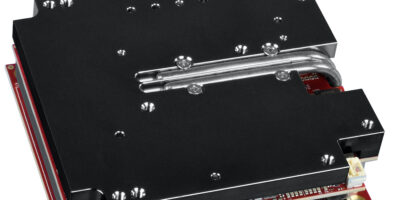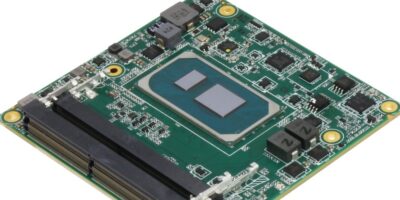A compact embedded computer from VersaLogic is based on the Intel Xeon processor. The Eagle features Intel’s Coffee Lake Refresh Xeon processor and includes high speed on-board NVMe SSD storage, ECC memory, Ethernet, TPM 2.0 security, general purpose I/O (GPIO) and USB ports, as well as a SATA port for off-board storage.
The compact size makes it suitable for use in restricted spaces. The Eagle is based on Intel’s 9th generation Xeon-E processor which features six cores and hyper-threading. There is also soldered down 128Gbyte NVMe fast read/write storage and up to 32Gbyte ECC memory. These features make it suitable for intensive processing at the edge, says Versalogic. This particularly applies when security concerns or limited communication bandwidth preclude sending raw data back to a data centre, the company says. Connectivity interfaces include Ethernet, USB 3.2, serial, I2C, GPIO, and Mini DisplayPort connections. SATA III connectivity is provided for applications requiring an off-board storage capability.
The compact and tough Eagle has a footprint of 96 x 90mm and is 37mm high to fit in most 1U enclosures.
As a member of the VersaLogic EPU product family, the Eagle is designed and tested for industrial temperature operation, i.e., -40 to +85 degrees C. It meets MIL-STD-202H specifications for shock and vibration. The latching connectors ensure secure cable attachment in hostile environments, says VersaLogic.
Like other VersaLogic products, the Eagle is designed from the ground up for long-term availability (10+ year typical production lifecycle). Modifications to the off-the-shelf product are available, even in low OEM quantities. Modifications include conformal coating, revision locks, custom labelling, customised testing and screening.
The Eagle (EPU-5120) is now in stock at VersaLogic and will be in stock at Digi-Key soon.
VersaLogic supplies embedded computers and expert technical support for critical markets such as medical and defence. Its products feature long-term availability, -40 to +85 degrees C operation, MIL-STD-202 shock and vibration testing, and US-based support.







